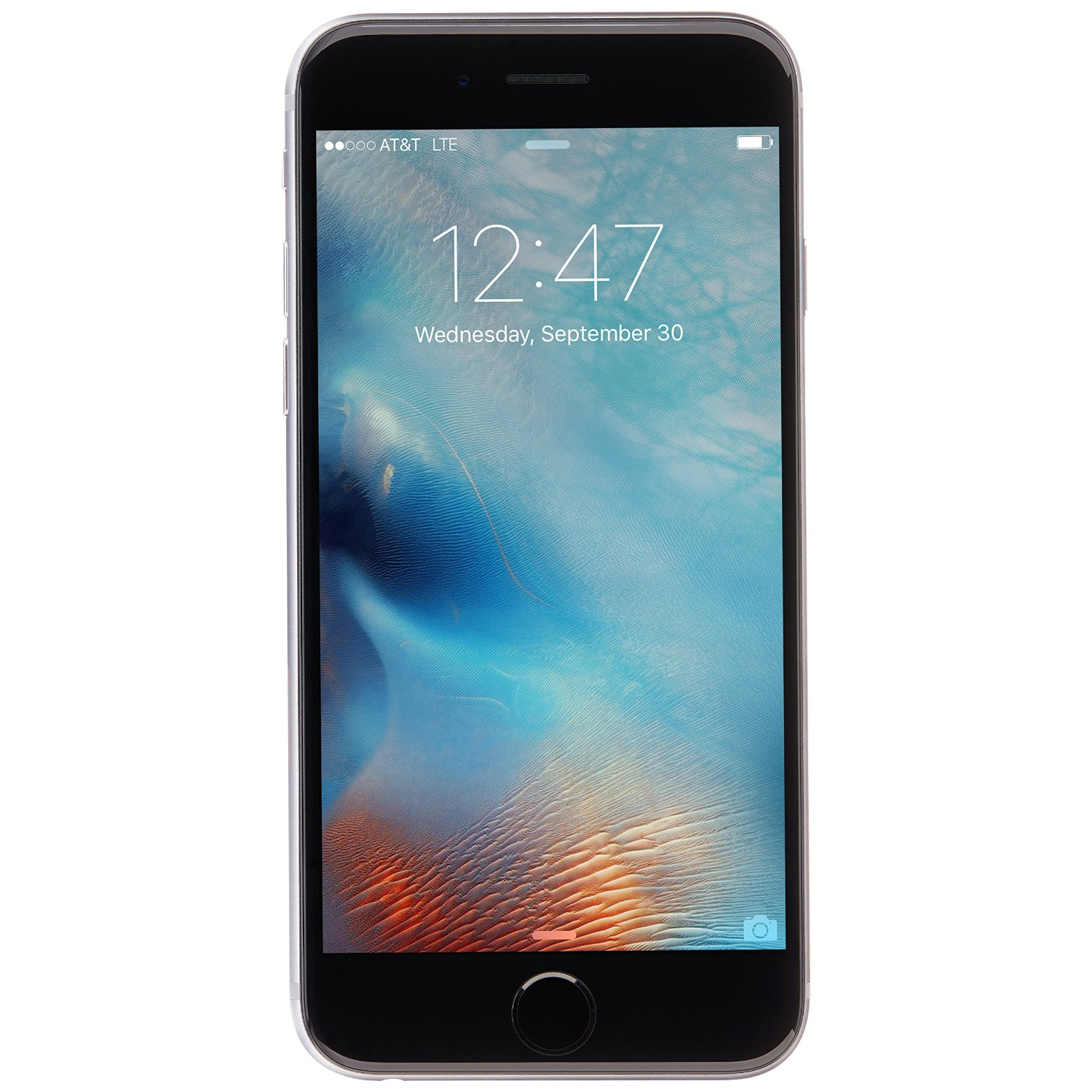Apple iPhone 6s And 6s Plus Review
The iPhone 6s and 6s Plus may look just like last year's iPhones, but hardware updates and Apple's new 3D Touch feature make them feel completely new. While the new cameras and 4K video recording may get the hype, it's the 2GB of RAM that steals the show.
Why you can trust Tom's Hardware
Display And Audio
Modern smartphones are really just miniature computers that also do telephony. Rapid advances in computational power are driving phones to adopt larger screens, just they have for every other computing form factor. Either because of denial or stubbornness, it took Apple a bit longer to accept this trend, finally giving its users access to more screen space with the iPhone 6.
After such a radical change, it's no surprise that Apple made no significant screen changes for this generation. The iPhone 6s still uses a 4.7-inch IPS panel with an odd, greater than 720p, 1334x750 resolution, giving it a sufficient 326 PPI pixel density. The larger 6s Plus comes with a 5.5-inch 1080p IPS panel with a 401 PPI density. While most flagship phablets are shipping with QHD (2560x1440) screens these days, the iPhone 6s Plus' 1080p panel is still very sharp. QHD is only really necessary for AMOLED panels (due to having fewer red and blue subpixels than RGB stripe LCD panels), virtual reality applications (because the screen is closer to your eyes), and for people who augmented their genetic code with eagle DNA.
Last year, Apple adopted two technologies for its larger Retina HD Displays that carry over to this generation: photo-aligned crystals and dual-domain pixels. Using light and a photoresist layer to achieve better crystal alignment improves the display's overall performance, including a lower black level and better contrast ratio. Dual-domain pixels, like the name implies, split each pixel into two domains or subpixels that have a slightly different crystal orientation. This technique improves viewing angles: While shifting your view, the pixels oriented away from you become dimmer, but the complementary subpixel oriented towards you gets brighter, partially compensating for that color's brightness reduction.
For our display measurements, we're using SpectraCal's CalMAN software and SpectraCal C6 colorimeter. All of the charts below with a gray background were generated in CalMAN v5 Ultimate. If you would like to learn more about our display testing procedure, or gain a better understanding of how these measurements affect visual quality, please read our article about how we test mobile displays.
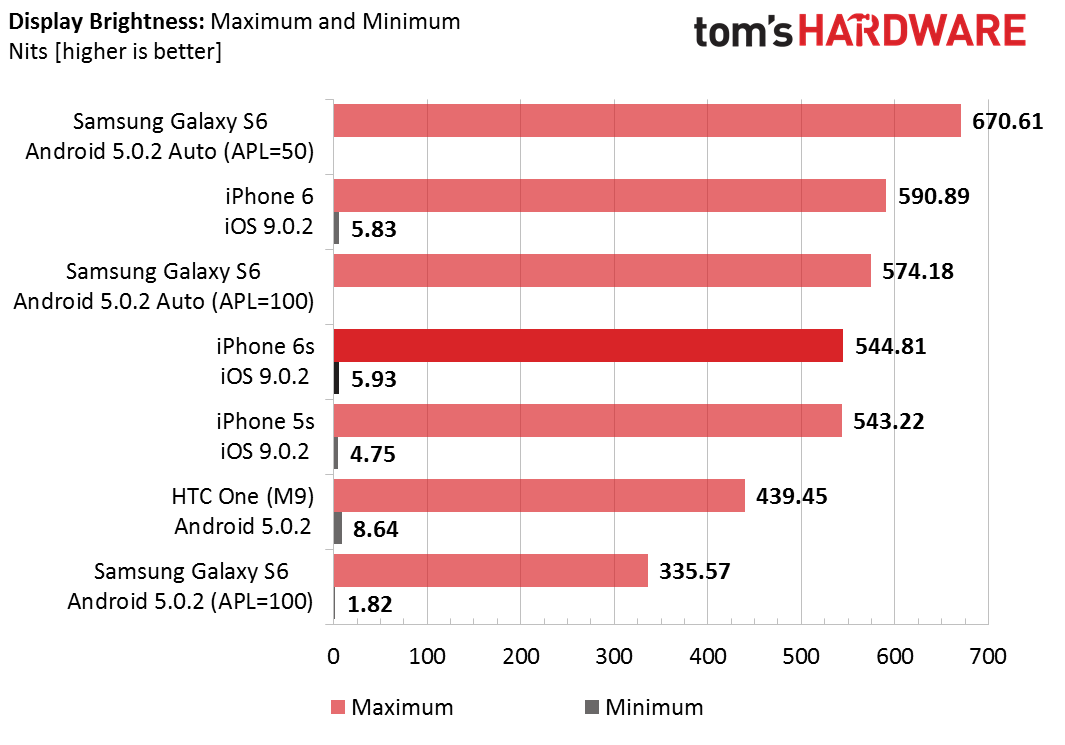


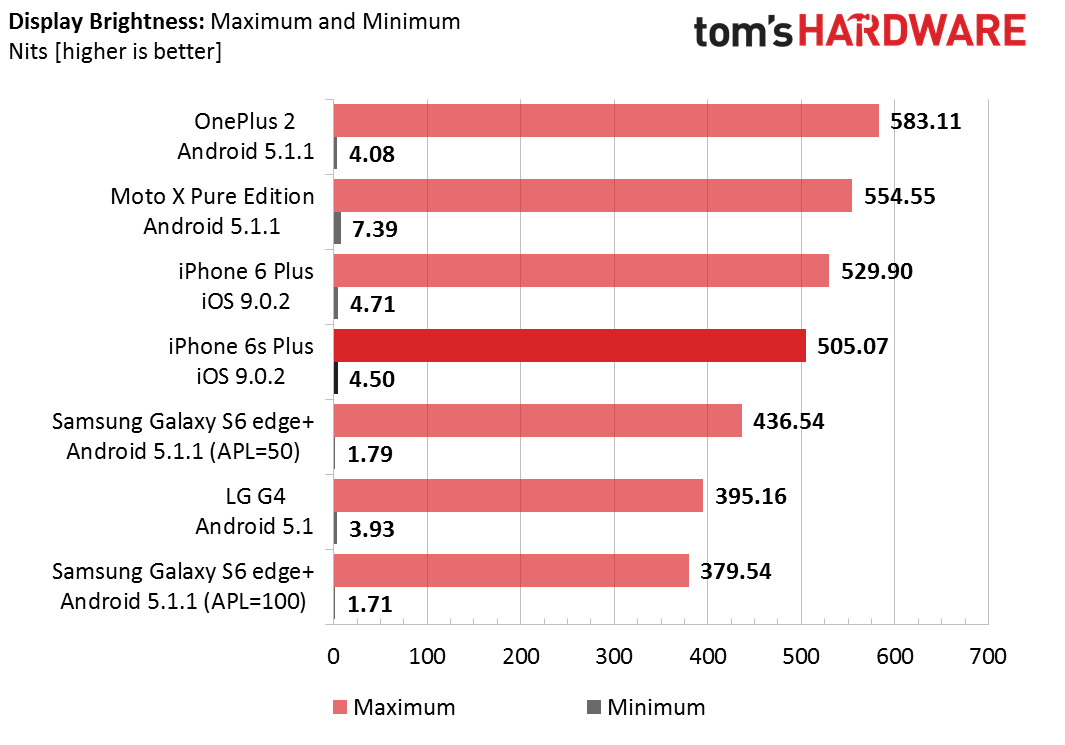

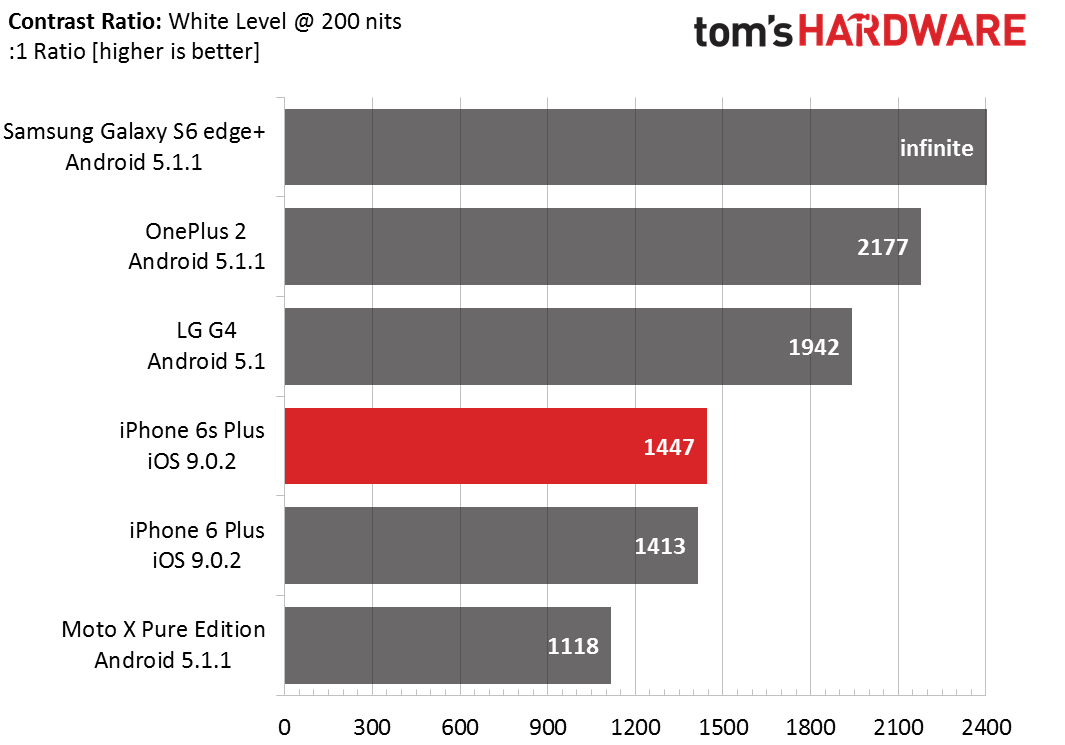
The iPhone 6s achieves a max brightness just shy of 550 nits, in between the 6s Plus and iPhone 6. In fact, the last three generations of iPhones all fall between 500 and 600 nits, bright enough to handle nearly every situation except direct sunlight. The only phones we've seen break the 600 nit barrier use Samsung's SAMOLED panels, but only in the Auto overdrive mode. The only other phone we've tested that gets close to 600 nits is the OnePlus 2.
The use of photo-aligned crystals help give the iPhone's displays very good black levels, although not as good as the IPS screens in both the OnePlus 2 and LG G4 (we asked LG if the G4's display also uses photo-aligned crystals, but received no response). Of course none of the IPS screens can match the perfect blacks produced by the AMOLED panels in Samsung's Galaxy S6 devices.
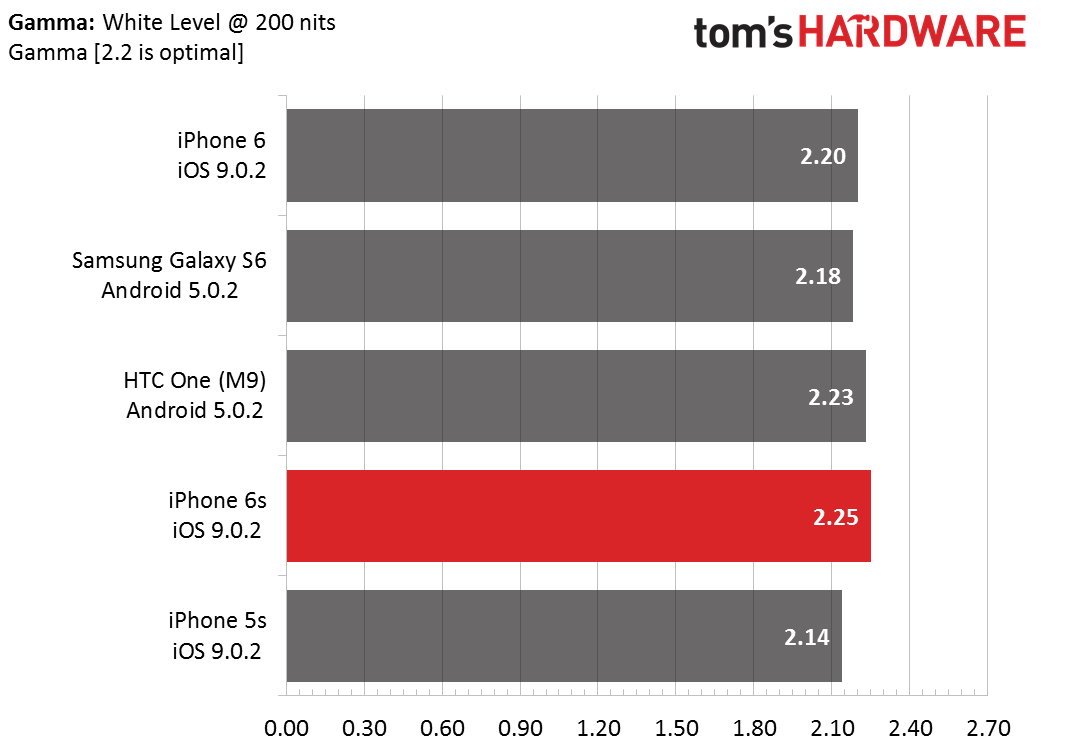


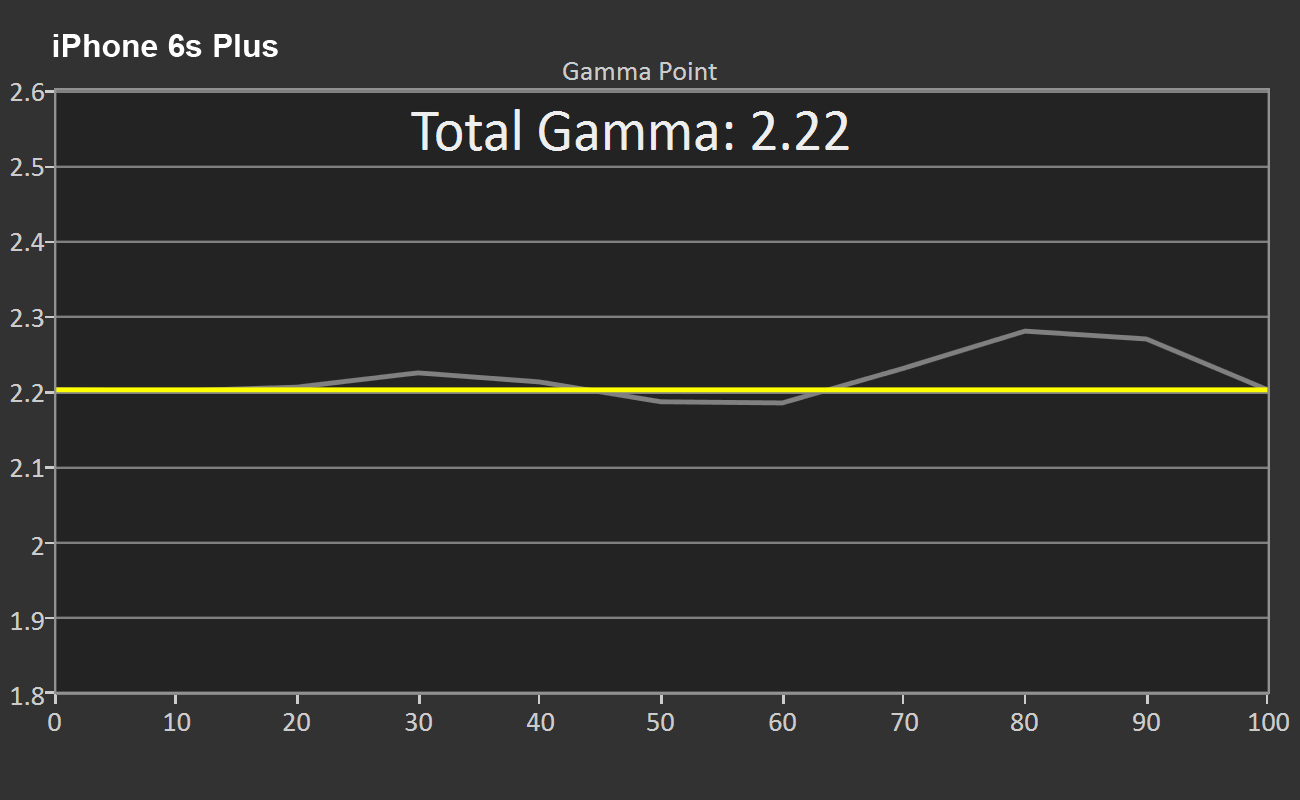
Most flagship phones have an average gamma near the ideal value of 2.2, and the new iPhones are no different. Gamma also varies little with luminance, ensuring good dynamic range and improved color accuracy regardless of display brightness.
Get Tom's Hardware's best news and in-depth reviews, straight to your inbox.
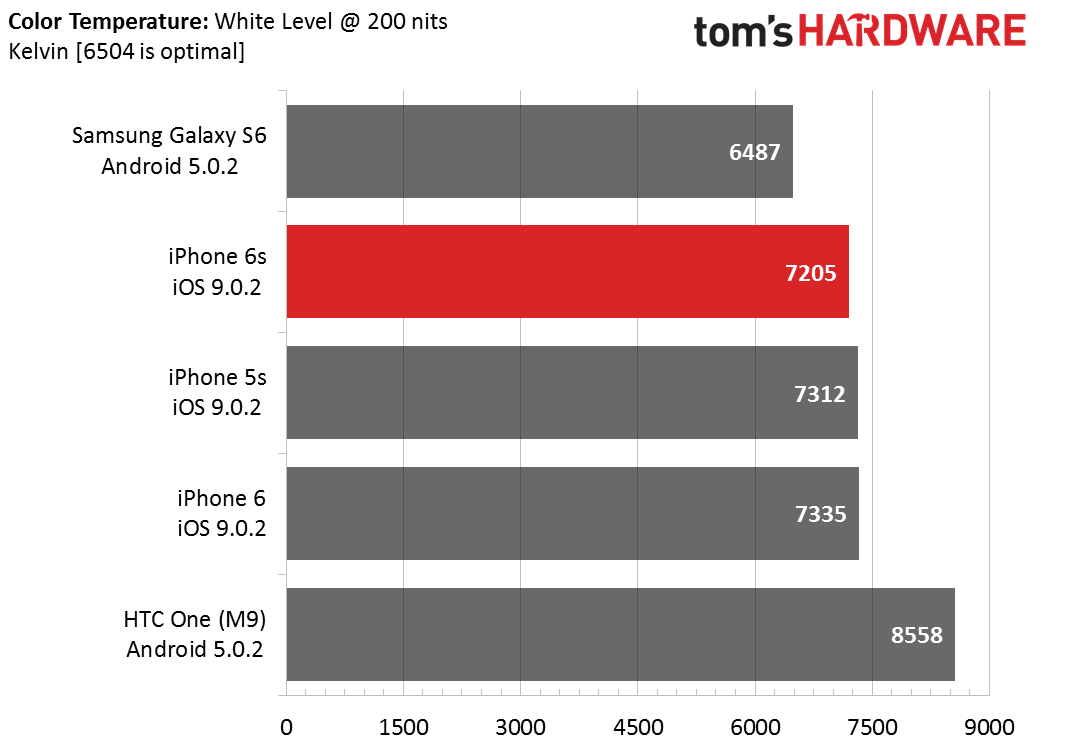



All iPhones dating back to the 5s hover right around 7300 K (our 6 Plus being a slight deviation), a slightly cooler color temperature that gives a pure white screen a noticeable, but faint, blue tint. It's obvious that Apple is deliberately targeting this color temperature, but why? Is it the result of market research showing a clear preference for this setting, or maybe it's the value used on Jony Ive's desktop monitor? Whatever the reason, if you've used an iPhone in the past couple of years, the new iPhones' screens will look familiar.
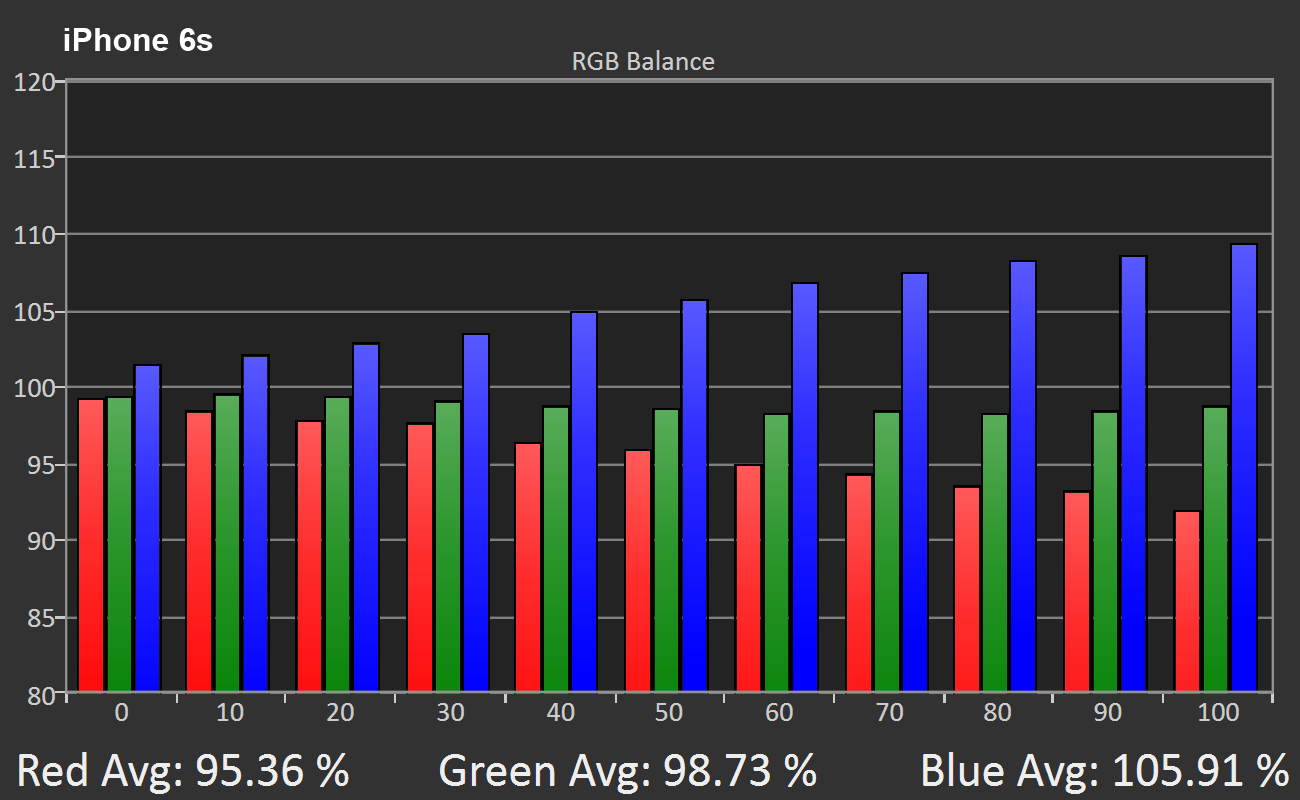
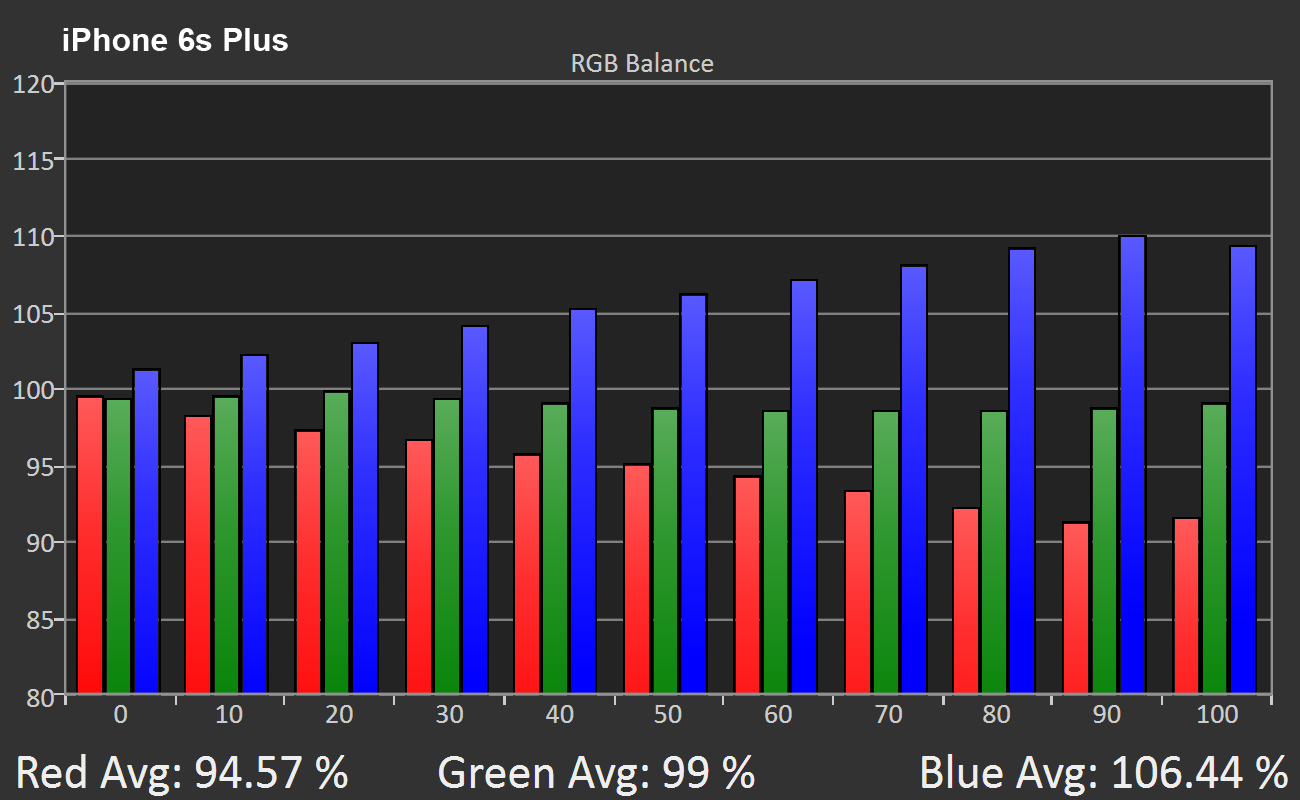
Like most IPS phone displays, the new iPhones show an increasing disparity between red and blue approaching 100 percent luminance. This is what gives the screens their cooler temperature profiles and slight blue cast. It also helps boost the iPhones' max brightness: Because of the blue LEDs used in the backlight, the screen will naturally emit more blue light than red. The only way to achieve a proper RGB balance is to partially close the blue subpixels, limiting max brightness.
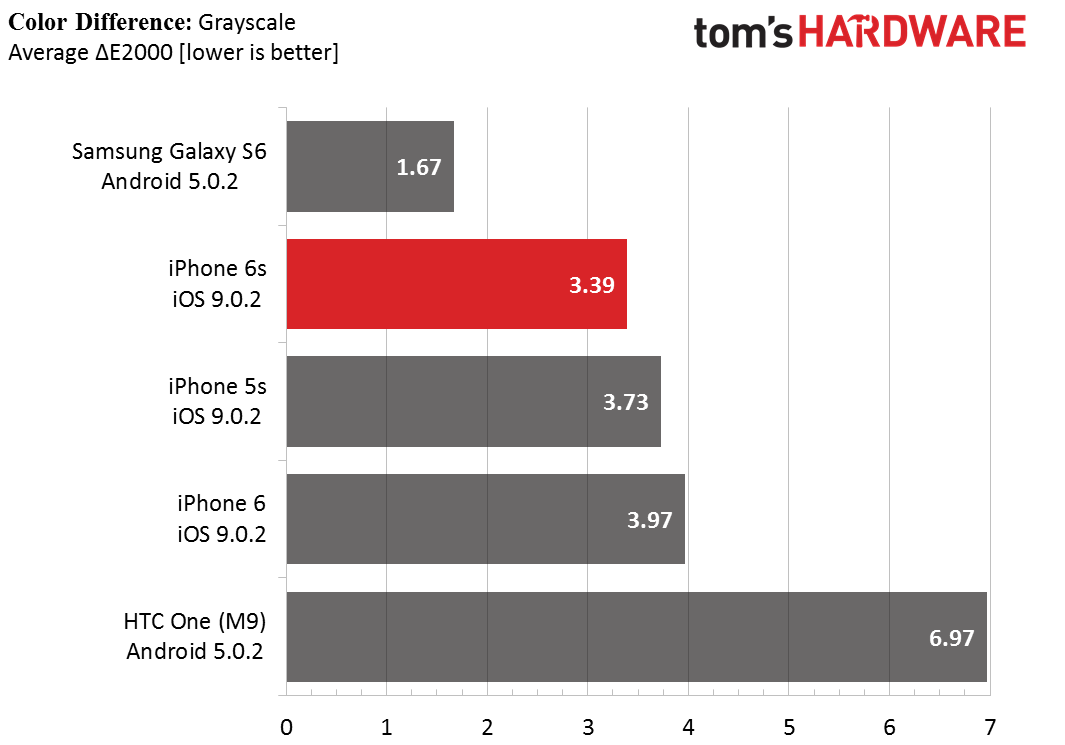

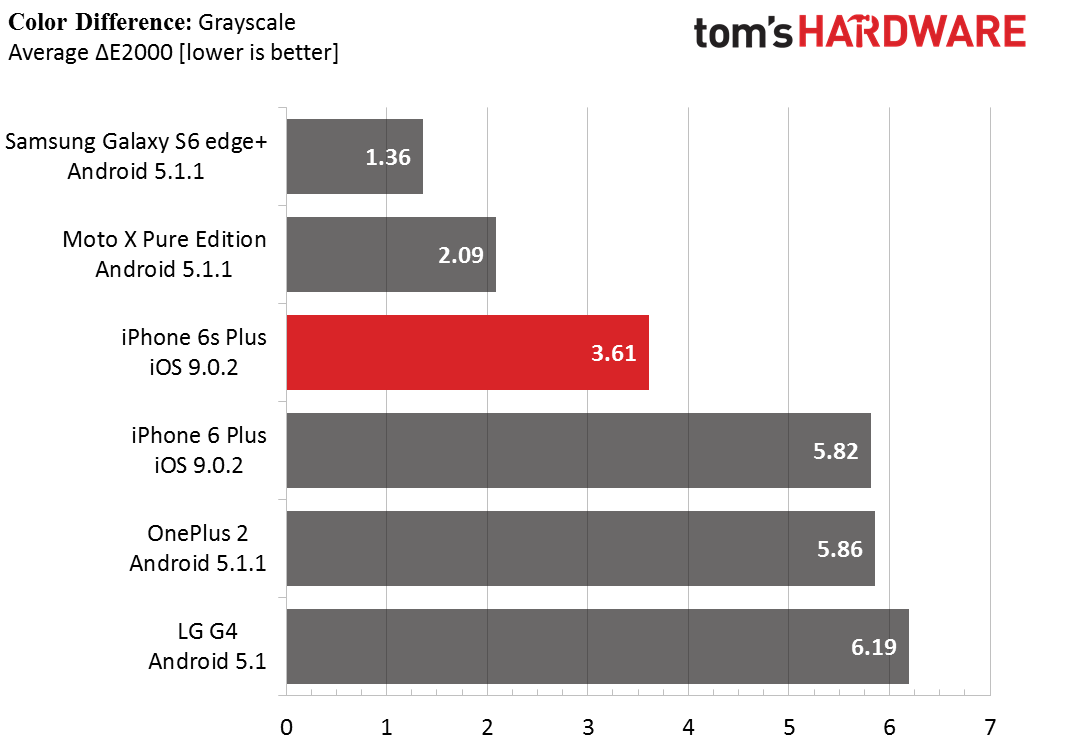
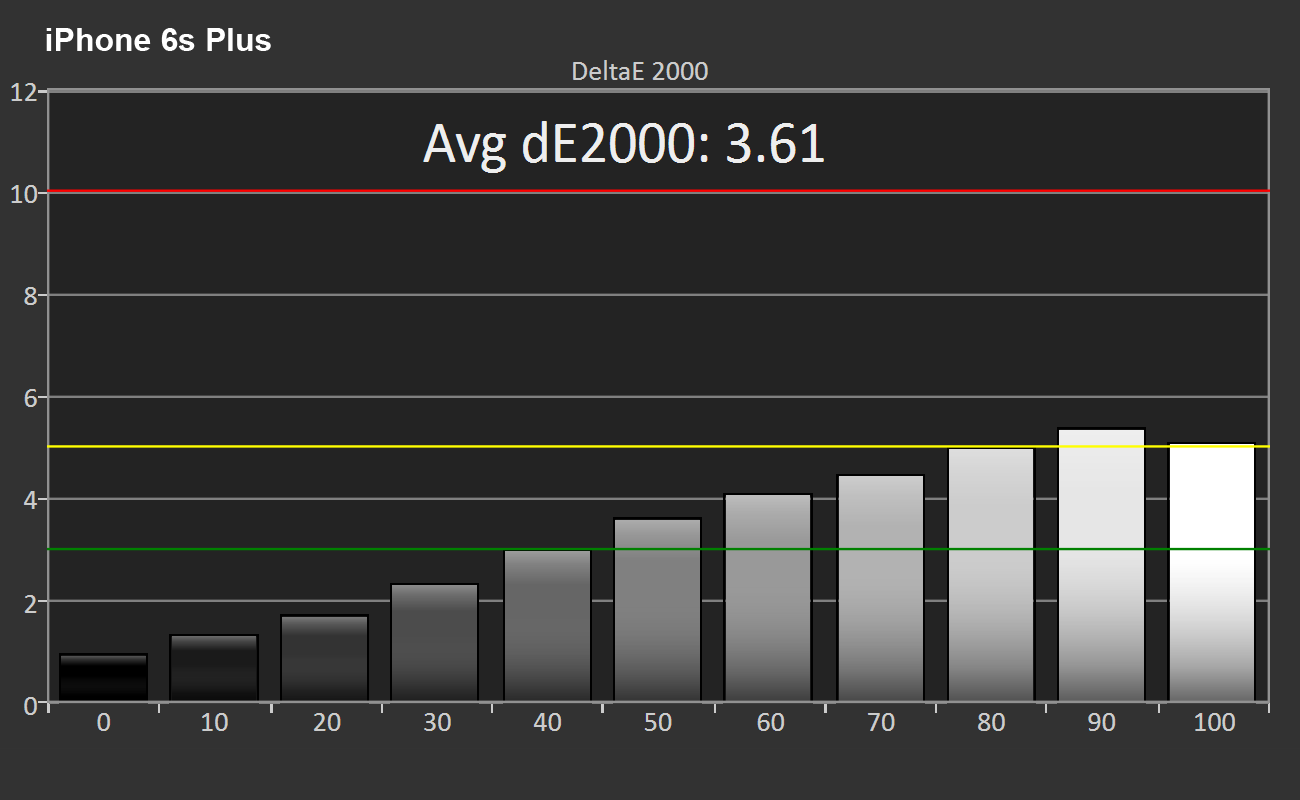
The new iPhones do reasonably well with grayscale accuracy, although not as well as Motorola's Moto X Pure Edition or Samsung's Galaxy S6 devices when using the Basic display mode. For luminance values less than about 40 percent, ΔE2000 error remains below three, which is considered good. Grayscale error reaches a maximum of around 5 near 100 percent luminance, the cutoff where error is noticeable but generally acceptable.

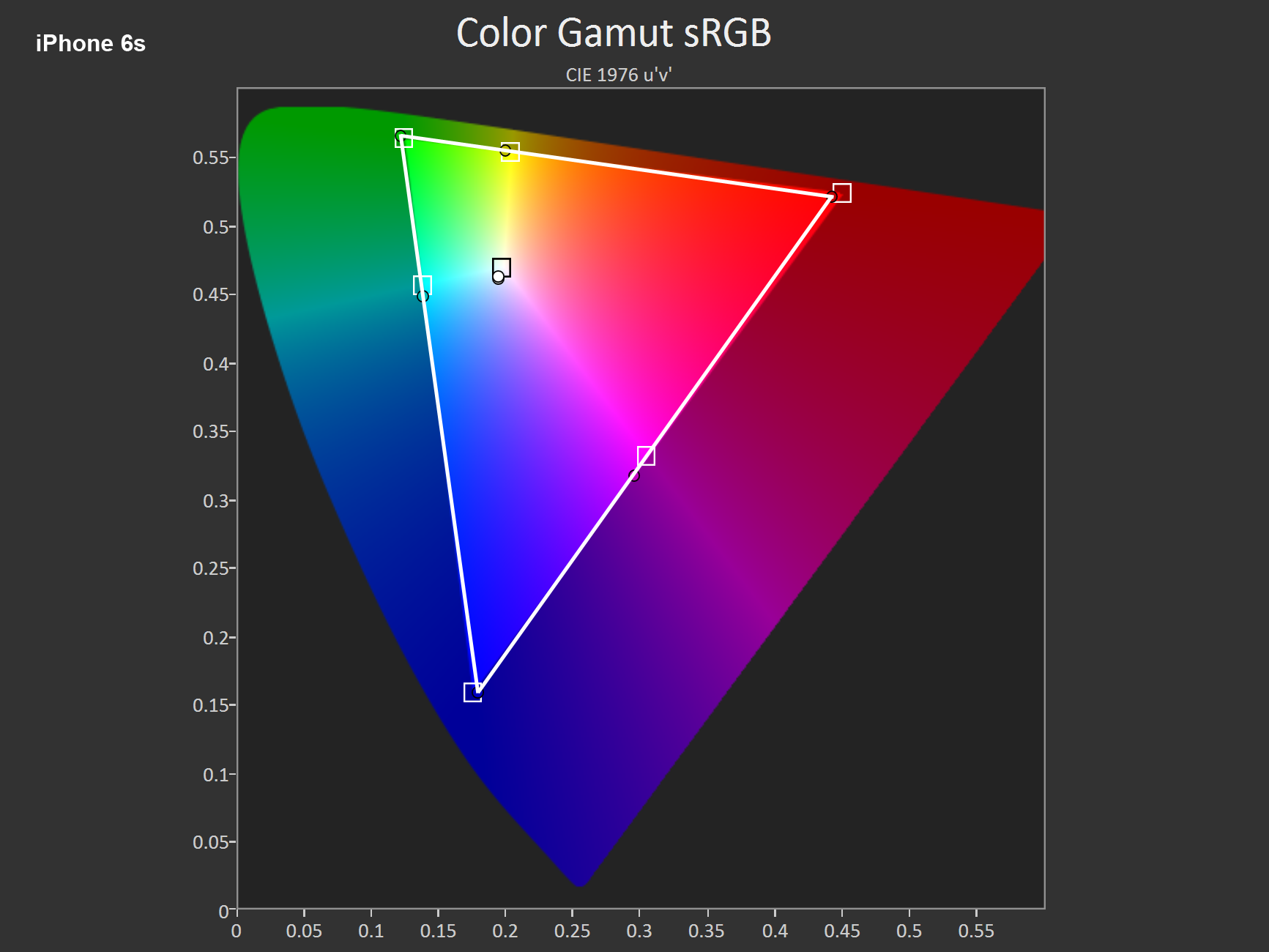

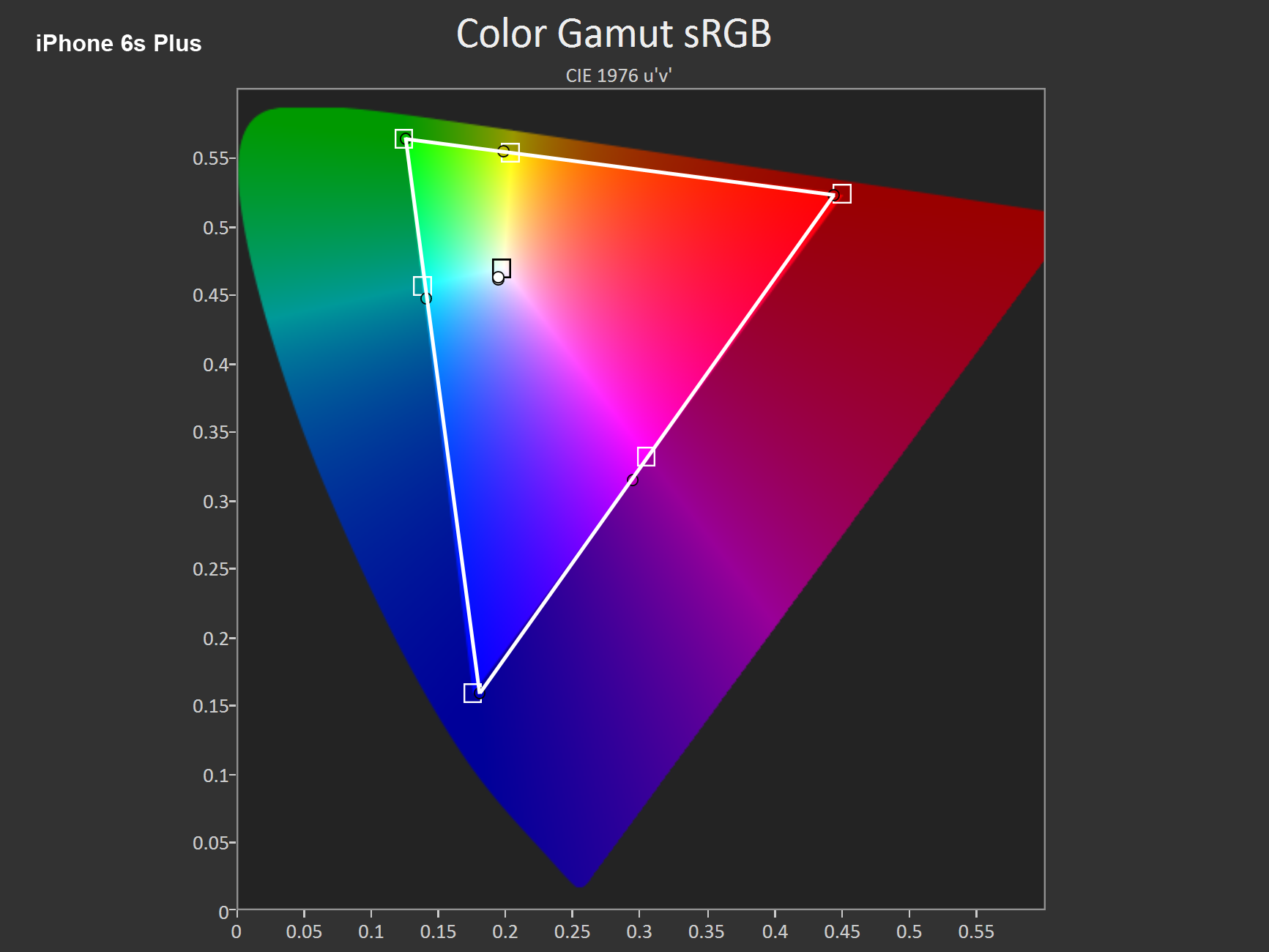
Apple continues to target the sRGB color space with its displays, avoiding the overly saturated, inaccurate colors that result from using wide-gamut displays with no software based color management.
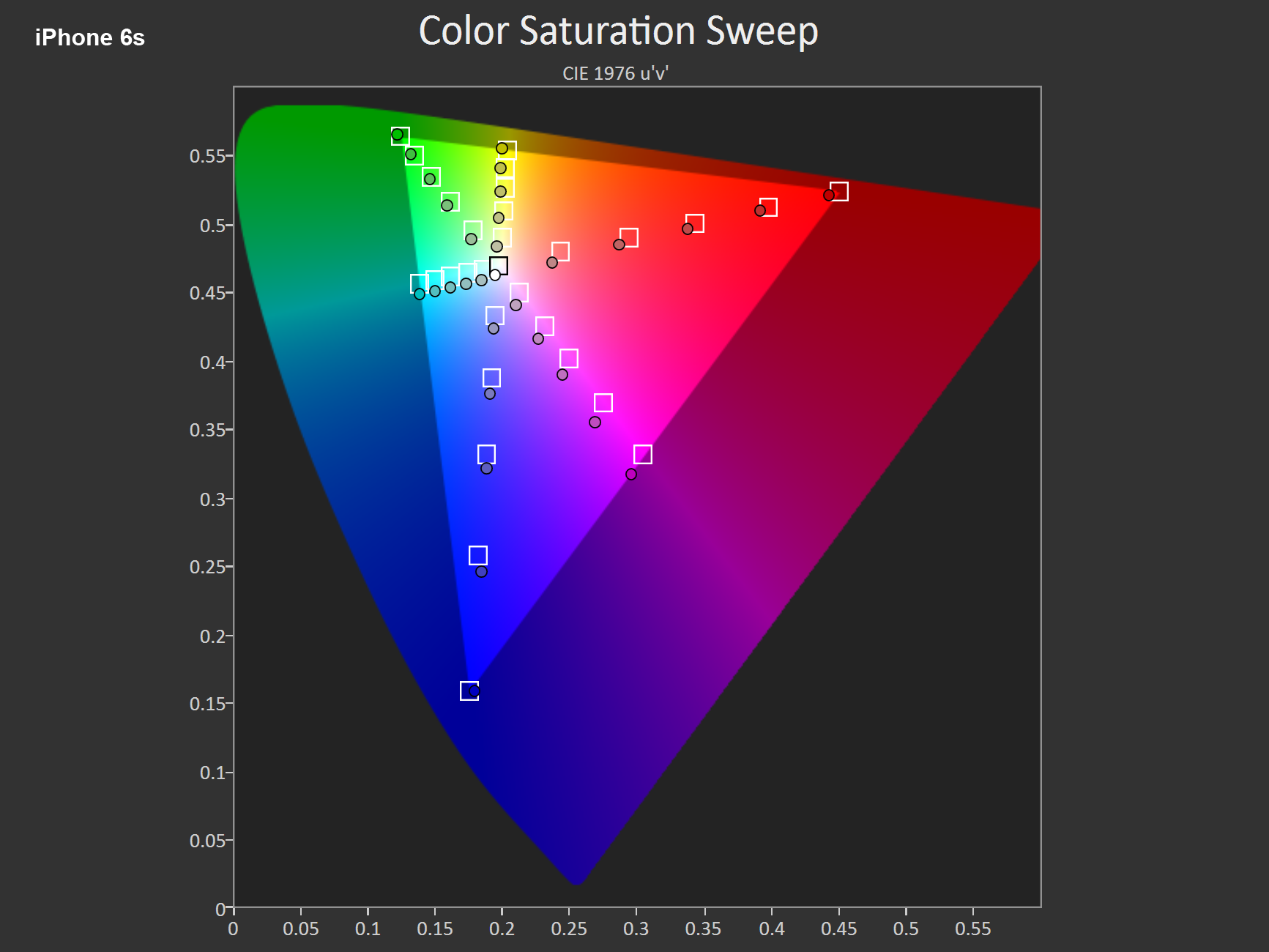
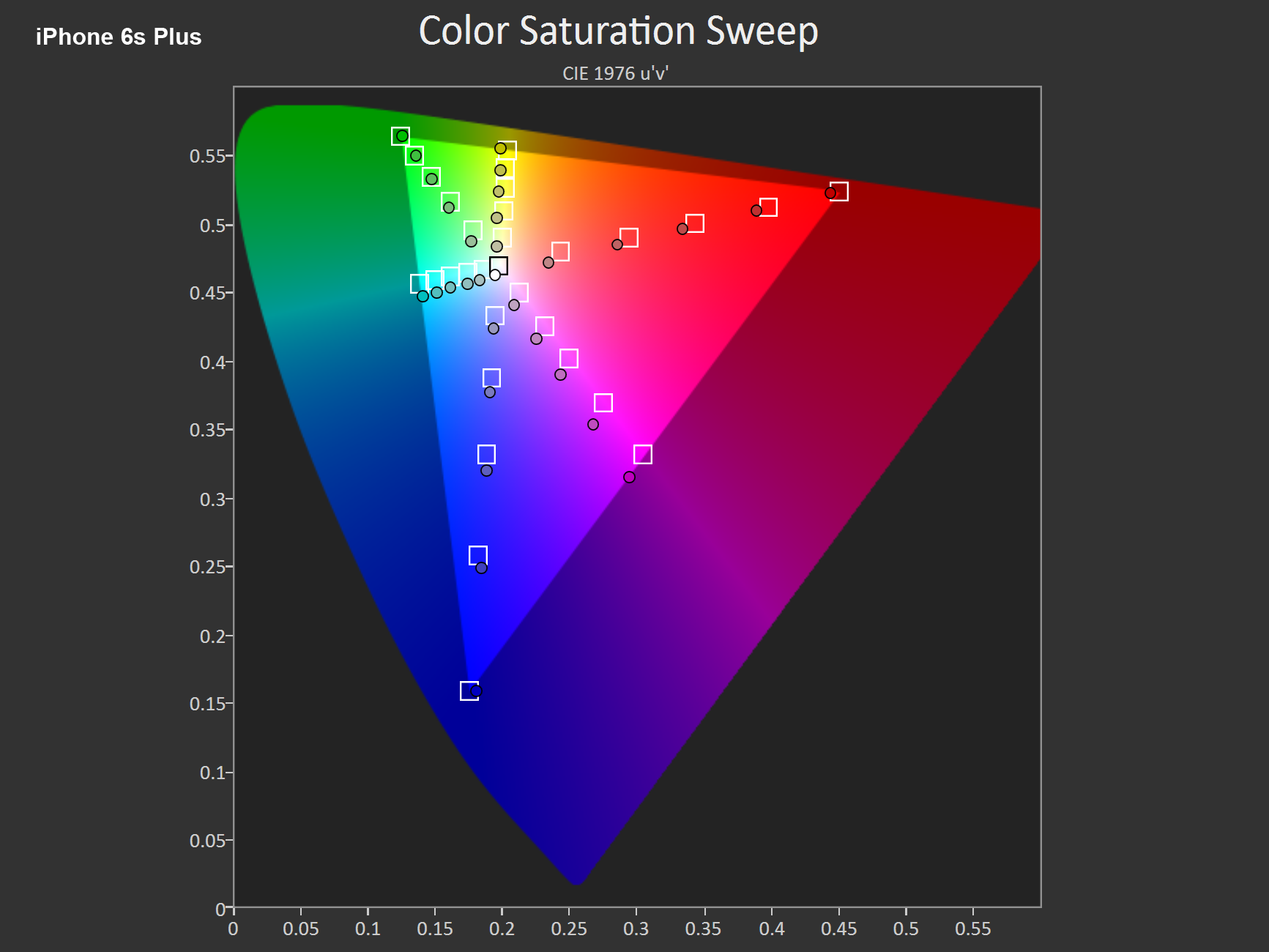
Both new iPhones perform the same in the color saturation sweep, with no major problems. Shades of blue are a bit too saturated, though, just missing the target boxes. We can also see how the cooler color temperature pulls the nearby secondary colors, magenta and cyan, towards blue.
While neither iPhone performs system-wide color compression, we did notice that Apple's native Photos app does apply color compression, which is a little surprising. So if you desire better color accuracy when reviewing photos on an iOS device (well, as accurate as you can get on an sRGB screen), you'll need to use a third-party app.
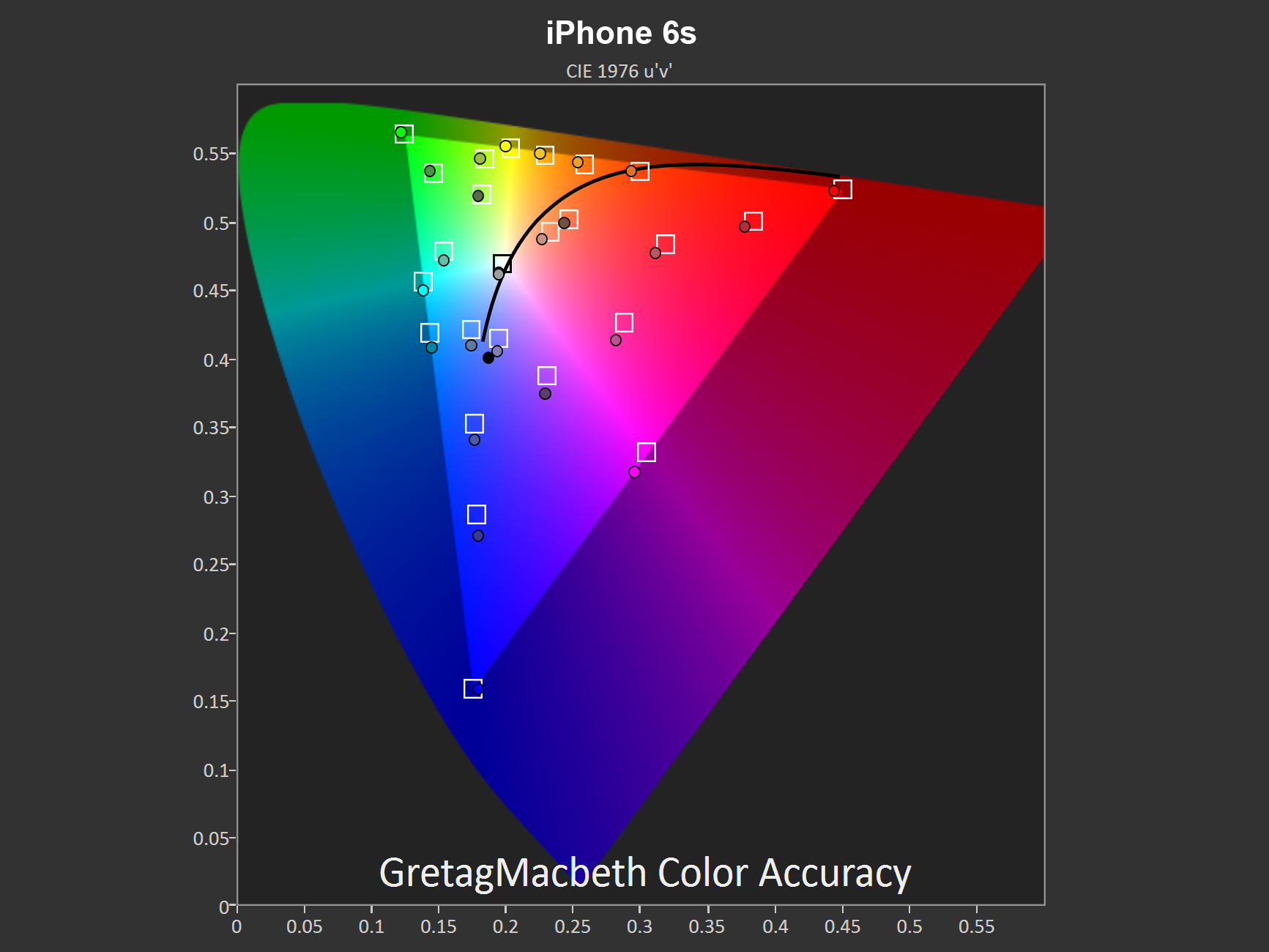

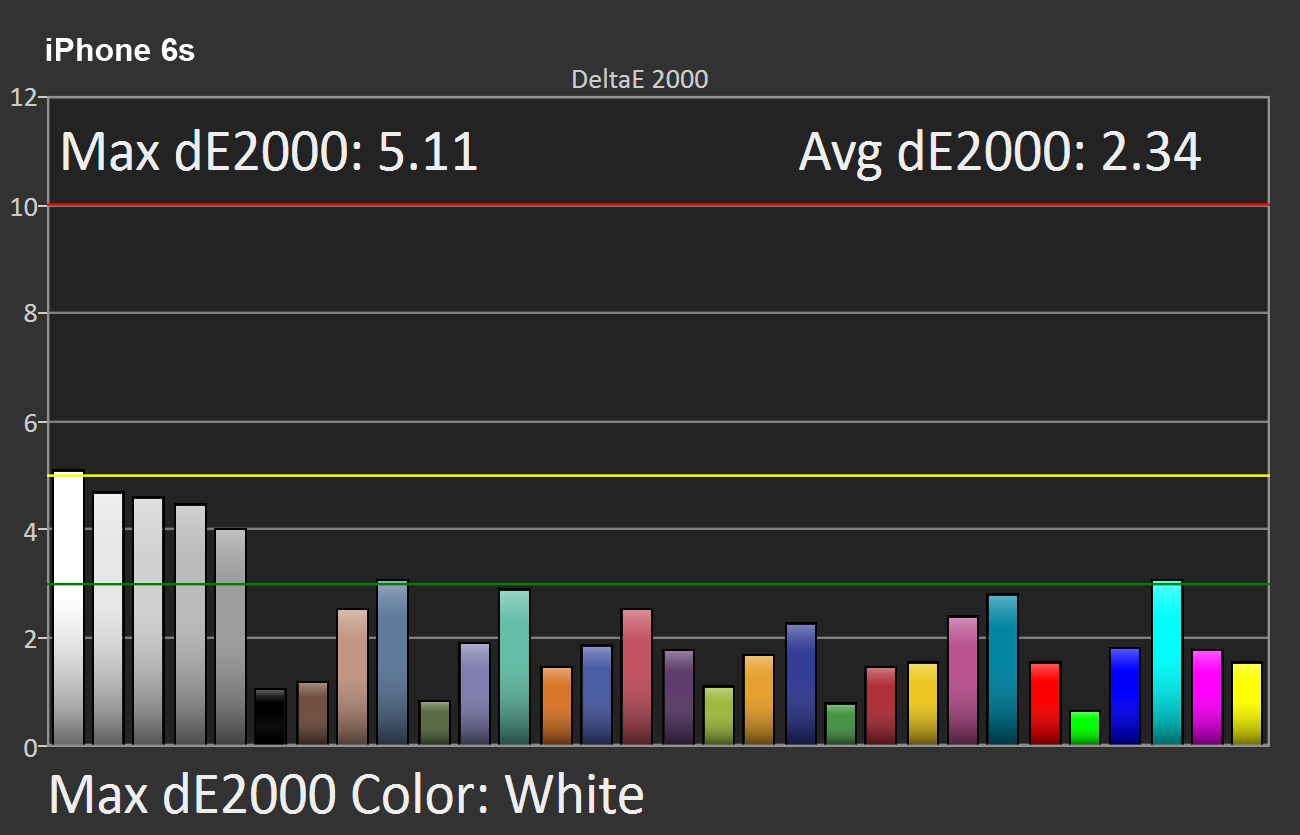

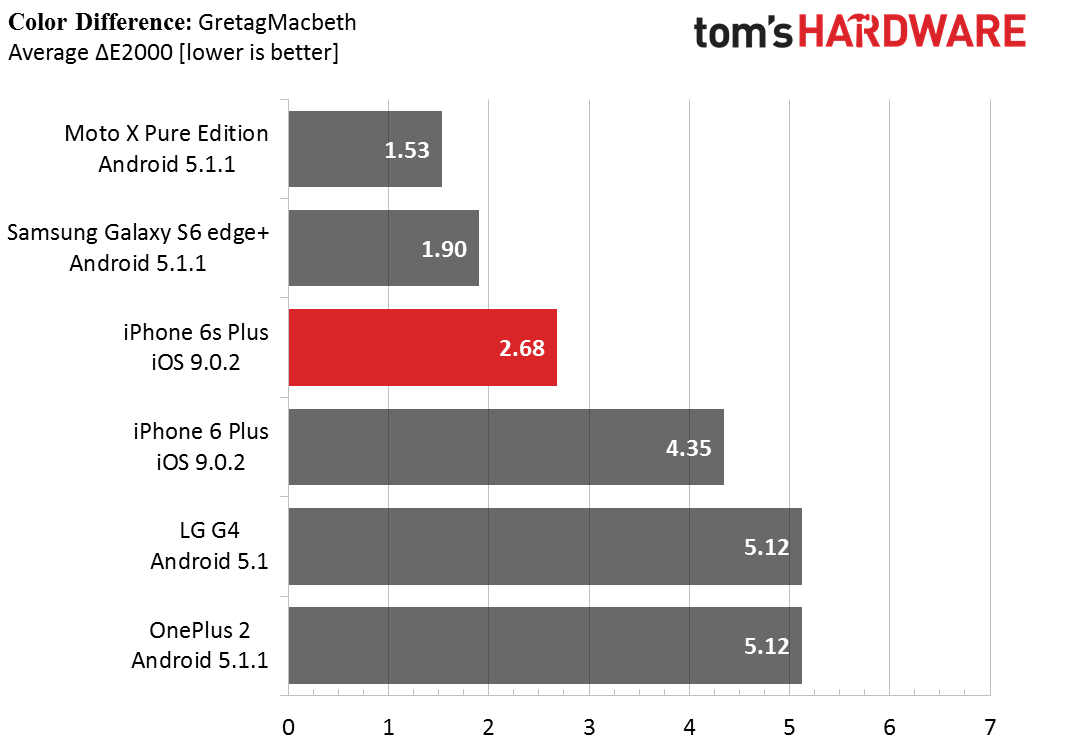
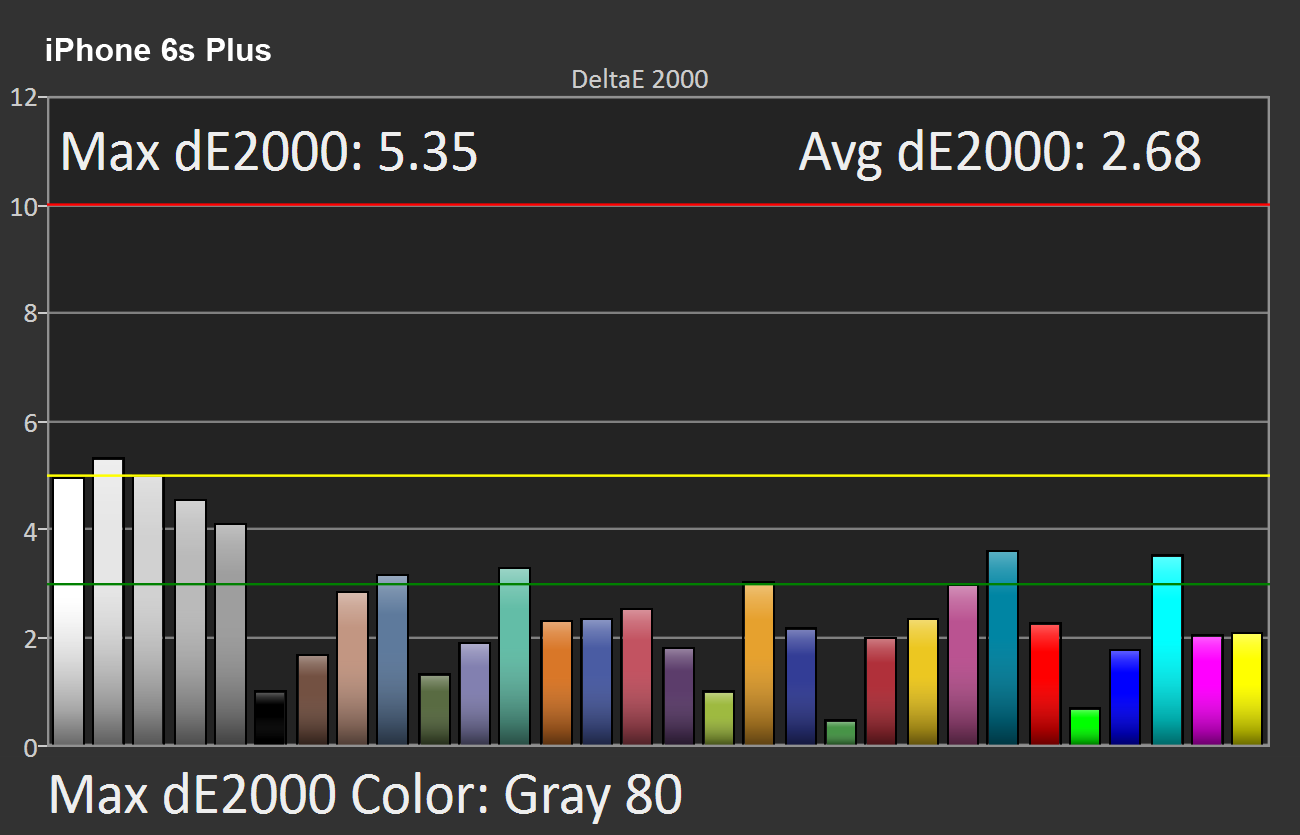
When it comes to color accuracy, both the iPhone 6s and 6s Plus show decent improvements over the previous generation. For the tested colors, ΔE2000 error hovers around three or below, with shades of green being the most accurate, ensuring most of the error will go unnoticed. Just like we saw with grayscale error, however, both Motorola and Samsung (in Basic mode at least) are doing a better job than Apple with display calibration.

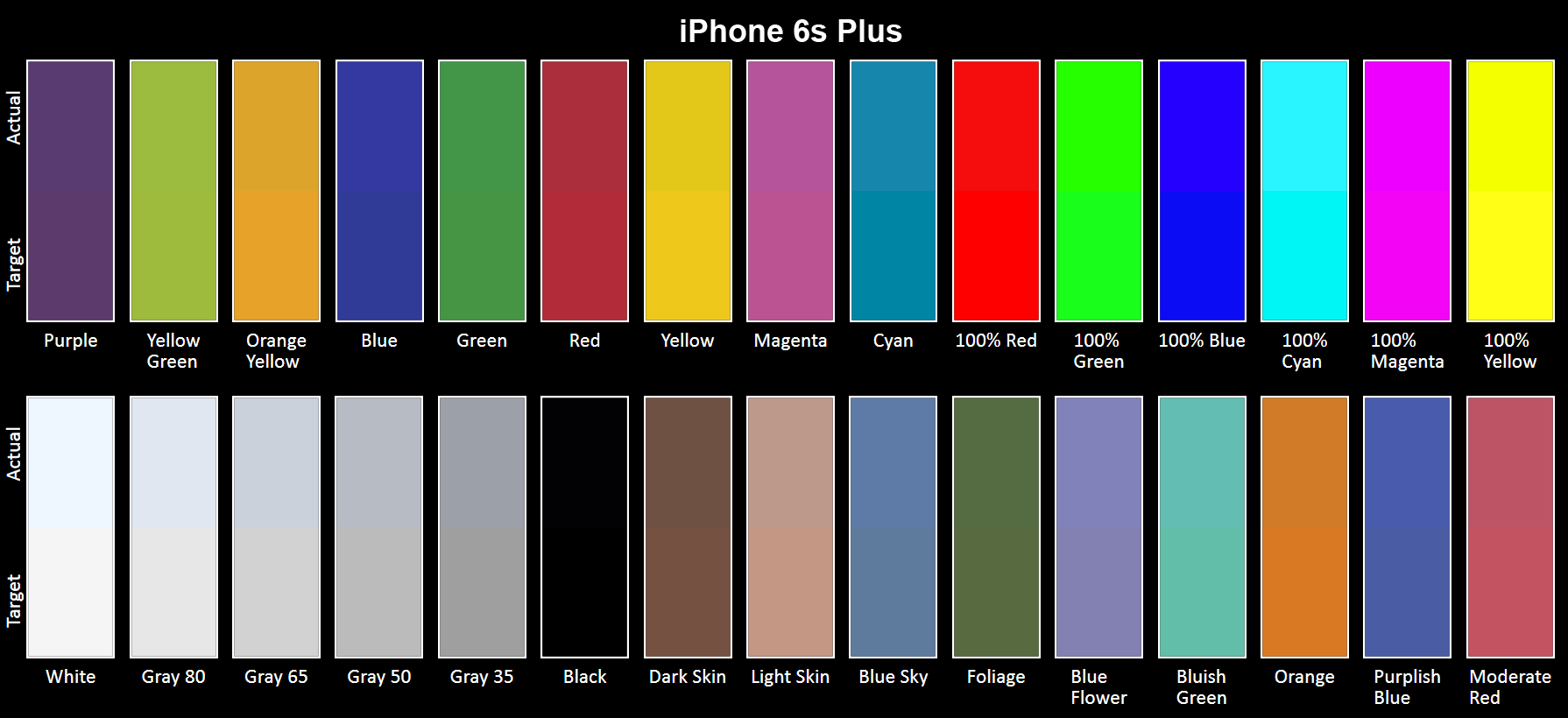
Full Size Images: [Color Palette: iPhone 6s], [Color Palette: iPhone 6s Plus]
The color palette above shows the target color on the bottom versus the displayed color on the top and is a nice way of visualizing the color error discussed above [note: the color accuracy of your screen will affect the actual colors you see]. A faint blue tint is visible on the gray shades, but most colors are very close to the target values.
Our display testing found no obvious issues with the iPhone 6s and 6s Plus. The displays are very similar to the previous models, but with slightly improved color accuracy. While Apple cannot claim to have the best smartphone screens, it still sets a performance standard many OEMs have yet to reach.
Audio Performance
Apple continues its longstanding relationship with Cirrus Logic for Audio ICs. Because Apple applies its own numbering system to the chips, we cannot determine their exact specifications. However, the single 338S00105 audio codec likely handles AD/DA conversion, while the two 338S1285 audio ICs probably operate as separate amplifiers for the external speaker and headphones/earpiece.
Also keeping with iPhone tradition, there's only a single, downward-firing speaker for music and audio. While not as good as having it on the front, we find this speaker location preferable to rear-mounted speakers, since there's less likelihood of your hand blocking the speaker when holding the phone or the sound getting muffled when it's sitting on a table.
Listening to a variety of music, ranging from Metallica to Daft Punk, through the external speakers of the iPhone 5s, 6, and 6s shows a clear progression in quality from old to new. Music from the 5s sounds muddy and flat, with subtle background sounds getting lost in the noise. The iPhone 6's sound quality is vastly improved, but still sounds a bit tinny. The 6 also seems to emphasize the strongest sound (usually vocals for music), while suppressing background tones.
The quality improvement from the 6 to the 6s is smaller than the jump from the 5s to the 6, but it's still quite noticeable. Sound from the iPhone 6s is fuller, shedding some of the tinniness of the prior model. Music is also clearer, allowing you to better isolate individual instruments and sounds in the background. Bass output is similar, but drums sound a bit tighter on the 6s.
The new iPhone also delivers more balanced sound output, eliminating the iPhone 6's tendency to exaggerate vocals or the loudest instrument. Depending on personal preferences and what's playing, this change can be either good or bad. The max volume is sufficiently loud to be heard across the room and is essentially the same as the iPhone 6, but louder than the 5s.
Headphone output sounds excellent, with no discernible difference in audio quality between the iPhone 6 and 6s. The iPhone continues to be our reference device for headphone sound quality, although several devices, such as the LG G4 and Sony's Xperia line, now match the iPhone's listening experience.
-
Shankovich I know lots of people are going to trash talk Apple here, but most of us know our hardware and thus should know a bit better. 2 gigs of ram seems low, but Apple's software is highly optimized and we know you can have a bunch of stuff open without it being that noticeable.Reply
Secondly, unless your eye ball touches the screen, you're not going to see a difference between a 1080p screen and above at typical viewing distances for a phone. (If you're going to complain about gaming on it, this site isn't for you). "So why don't they just put a higher res screen on it for the marketing aspect?" Well, aside from them being Apple, which is enough for most people, a higher res screen that most will barely be able to tell from FHD also means more work for the GPU, which means less battery life.
LG, Samsung, etc all do the same thing year over year, that being incremental upgrades, like Apple does. They're all the same. We've reached a saturation point in mobile devices now (probably did 2 years ago). -
10tacle What year is this? Why are we still seeing "new" so-called high end phones with 1080p 5.5" displays and 16GB base memory offerings? And for anyone who says that you can't really see the difference between 1080p and 1440p on such a small screen, get your eyes checked. Happy Samsung Note 5 owner here, upgrading from an 1136p, 326ppi iPhone 5S. (The Galaxy 6 and Note 5 are 1440p with 518ppi for anyone who cares).Reply -
monsta ummmmm don't you think you are just a bit late reviewing this phone that was released months ago ? LOLReply -
iam2thecrowe Seems ok if price isn't an object, most plans include the cost of the phone in a monthly payment now anyway. I will be getting one for work later this year, just hopefully battery life is much better than the 5s which is my current work phone. I wouldn't get one if I had to pay for it out of my own pocket though.Reply -
razor512 While I don't like the iphone, more companies need to follow their lead with the SOC. Instead of focusing on 8 slower cores (of which 4-6 of then remain idle most of the time since many tasks are not multithreaded. Focus on improving the IPC of the CPU and run newer but faster cores.Reply -
Astone3145 "QHD is only really necessary for AMOLED panels (due to having fewer red and blue subpixels than RGB stripe LCD panels), virtual reality applications (because the screen is closer to your eyes), and for people who augmented their genetic code with eagle DNA."Reply
I would love to have access to some of that augmented eagle DNA! -
MobileEditor ReplyI would love to have access to some of that augmented eagle DNA!
Do you struggle to see faraway objects? Find yourself squinting to read small text on your smartphone? Thanks to a breakthrough in genetic engineering, you can permanently upgrade your vision by augmenting your own blueprint with eagle DNA!
* See up to five times farther
* Experience more vivid colors
* See UV light
These are just a few of the advantages that await you after only a single, semi-painless treatment.
This treatment is not approved by the FDA. Some people may experience side effects, including upset stomach, loss of bone mass, accelerated growth of toenails, hardening of the lips, and nose bleeds. Please contact your doctor immediately if you feel the urge to jump from tall structures and soar above the trees, as this could indicate a potentially fatal condition. -
none12345 When your hardware is so far behind the competition its easy to make 70% gains lol. On one hand it's nice to see apple finally putting a little more hardware in their pones; on the other hand, flash is very cheap these days, and only 16 gigs is just downright laughable. The fact that put in like $5-15 more of ram and charge you $100-$300 is just a joke.Reply
And ya at minimum i would expect a 1080p screen, but really 1440p woudl be better. I dont know if phones need 4k in 5-6" just yet, at some point, sure. If you look at all the vr phone boxes coming out lately, you will absolutely notice a huge difference in screen res at a few inches from your eyes. Even 8k is not sufficient for that purpose.
In short tho, too little, too late, no thanks.
